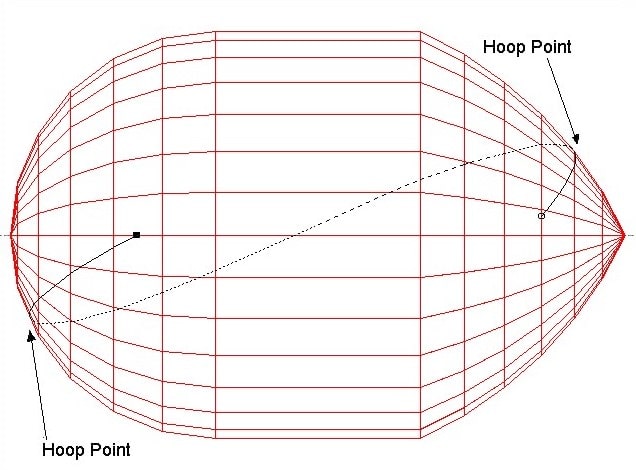Stages of program Generation
 Cadfil Help contents
Cadfil Help contents  Cadfil.com Home
Cadfil.com Home
CADFIL comprises of four stages, mandrel definition, fibre path design and payout eye path generation and post processing. The QuickCad options available for certain geometries complete the first three stages in one go.
Post-processing converts the machine independent payout path into machine instructions compatible with the relevant winding machine controller. Post-processing is divided into a number of options dependant upon machine axes available, and which axes are to be used. These options enable a program to be generated using a different machine control strategies.
The post post-processor can be configured for specific winding machine type and requirements in a very general way. Detail can be found in the post-processor sections of this help system. If your system has technical support we are happy to help in machine configuration.
The user is initially required to define the mandrel geometry. This is achieved within the mandrel edit or new mandrel options, mandrel edit. Alternatively the mandrel data can be imported from a CAD program (such as AutoCAD) via a DXF file, and option described else where in this help file. The edit option asks for an existing mandrel file (.mnd extension).
The mandrel geometry is defined by the input of data points, in the form of X,R co-ordinates. X being the position along the mandrel's axis of revolution, and R the component's radius at this position. A three dimensional surface mesh is automatically created from this information in the fibre design section.
Once the mandrel has been generated, the user can create fibre paths on it, by selecting the create path option from the Cadfil main menu. The mandrel geometry determines the path of the fibre once the initial start point and fibre direction have been entered, and can only be varied by a small amount, dependant upon the coefficient of friction between the fibre, the resin and the surface of the mandrel.
The user then develops the fibre path, using friction when necessary, until the path's completion by the generation of two hoop points within the path as shown below. The fibre path is then saved, and the fibre design section exited.

The payout path section (create payout path on the Cadfil main menu) reads the fibre path data file and calculates the machine positions (relative to the mandrel). Fibre and resin data and other necessary parameters are given at this stage to determine the number of fibre cycles required to cover the component. The amount of fibre required is given and a graph showing the composite thickness on the mandrel is displayed. A data file containing machine co-ordinate points relative to mandrel is written for use by the post-processor. If required this payout path data can be graphically viewed to show the machine positions, the band structure or to animate the winding..
It is possible to use a mandrel to create a number of fibre path and then payout paths for different wind angles or areas of mandrel coverage. To wind these paths as automatic sequence on the machine, joining paths need to be created to connect the end of one winding program to the start of the next. Having created a series of payout files and joining payout files these are combined in a control file. The post processor can use the control file to generate a complete winding program foe all layers without having to edit the machine control (NC) data in any way.
The final stage of the CADFIL system is to translate the payout file into winding machine instructions. The post-processor performs this task. Post-processors can be configured to produce programs for an almost limitless variety of machines.
The NC part program is an ASCII format file, as are all CADFIL data files, permitting easy editing. The NC file can then be transferred to the NC controller using proprietary file transfer software and the program should then be run in accordance with the filament winding machine manufacturer's instructions.